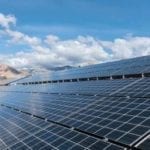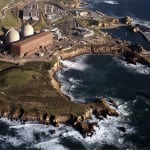In mid-August, the western U.S. experienced some of the most extreme heat it has encountered in recorded history. Temperatures in some locations were up to 20F above normal. During the hot spell, California recorded four of the five hottest August days since 1985—Aug. 15 was the hottest and Aug. 14 was the third hottest.
High temperatures affect the power grid in several ways. Not surprisingly, demand increases as electric customers’ air conditioners are forced to work harder to keep spaces cool. On the supply side, conventional thermal generation operates less efficiently under high-temperature conditions. Extreme heat, which is often coupled with drought, over time can affect the availability of hydroelectric power. Furthermore, the capacity of transmission lines decreases when it’s hot, and when lines are carrying a lot of power, more heat is generated, which results in a troubling feedback effect.
Rotating Outages
California had other issues working against it on Aug. 14 and 15. Numerous wildfires threatened the loss of major transmission lines, and high clouds from a storm were covering parts of the state, reducing the output from solar facilities. California typically imports a lot of energy from neighboring states, but because the heatwave was affecting most of the Western region, fewer imports were available than usual.
The California ISO (CAISO) was not oblivious to the problem. Understanding the forecast and seeing the trends, it issued a restricted maintenance request on Aug. 12, covering the period from Aug. 14 through Aug. 17. The notice cautions generator and transmission operators to avoid actions that could jeopardize resource availability. CAISO also issued a “Flex Alert” on Aug. 13, appealing to consumers for voluntary energy conservation on Aug. 14 from 3 p.m. to 10 p.m. local time.
Despite the pre-emptive actions, CAISO was forced to declare a “Stage 3 Emergency” at 6:38 p.m. on Aug. 14, because reserves had fallen below the minimum requirement (about 6% of load), which is established by the North American Electric Reliability Corp. and the Western Electricity Coordinating Council. As a result, CAISO initiated rotating outages, which affected nearly a half million customers for anywhere from 15 minutes to 2.5 hours, depending on the location. Similarly, on Aug. 15, a Stage 3 Emergency was declared at 6:28 p.m., with loadshedding affecting about 321,000 customers for a duration of about 8 minutes to an hour and a half.
Root Cause Investigation
Following the two rotating outages, Gov. Gavin Newsom on Aug. 17 sent a letter to the California Public Utilities Commission (CPUC), California Energy Commission (CEC), and CAISO requesting a review of existing forecasting methods and resource adequacy requirements. On Oct. 6, the three entities issued a “Preliminary Root Cause Analysis” and committed to delivering a final report by the end of the year.
According to the preliminary investigation, there was no single root cause for the trouble; rather, three broad factors were said to have contributed to the outages. Quoting from the report, the factors were:
- The climate change-induced extreme heat storm across the western United States resulted in the demand for electricity exceeding the existing electricity resource planning targets. The existing resource planning processes are not designed to fully address an extreme heat storm like the one experienced in mid-August.
- In transitioning to a reliable, clean, and affordable resource mix, resource planning targets have not kept pace to lead to sufficient resources that can be relied upon to meet demand in the early evening hours. This makes balancing demand and supply more challenging. These challenges were amplified by the extreme heat storm.
- Some practices in the day-ahead energy market exacerbated the supply challenges under highly stressed conditions.
Operating a grid such as California’s is obviously a complex job, and there’s no doubt that the extreme heat and existing market practices played a significant role in the mid-August rotating outages. However, the state’s accelerated transition away from fossil and nuclear resources shouldn’t be overlooked.
California’s goal is to procure 60% of its electricity from renewable resources by 2030, and source 100% clean energy by 2045. There is currently only one coal-fired power plant in California—the 63-MW Argus cogen plant in San Bernardino County. It accounts for less than 0.1% of the state’s energy supply. California’s only operating commercial nuclear plant is the dual-unit Diablo Canyon station. It generates about 10% of the state’s electricity. On Aug. 14 and 15, both Diablo Canyon units operated at 100% power, reliably supporting the grid. It should be noted that the Palo Verde nuclear plant in Arizona, which regularly exports energy to California, also operated its three units at 100% output on the days in question.
Diablo Canyon won’t be around much longer. Under pressure from environmental groups and others, Pacific Gas and Electric plans to retire the units in 2024 and 2025, respectively. The company has said it intends to replace the 2.4 GW of capacity with renewables, energy efficiency, and energy storage.
Natural gas-fired generation supplied the majority of electricity during the mid-August rolling blackouts—about 56.3% and 58% of the supply during the net demand peaks on Aug. 14 and 15, respectively. But it’s worth mentioning that a number of still-serviceable gas-fired power plants have been shuttered in California over the years. Would having more fossil and nuclear generation in the mix have kept the lights on for everyone in California? I believe the answer is yes. ■
—Aaron Larson is POWER’s executive editor.










